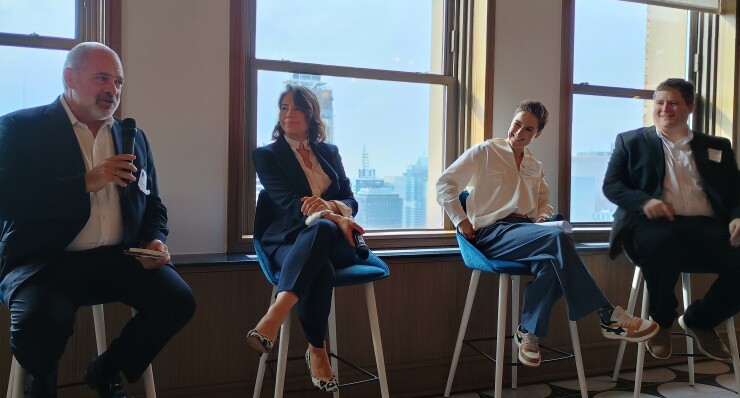Takeaways:
- Climate scientists quantify weather risks for insurers
- Climate scientists help interpret what technologies cannot
- Doctoral-level scientists gaining influence in insurance and financial services
Climate science teams are catching on at insurers and financial services firms, and members of these new teams described this trend at ClimateTech Connect in New York on September 25.
Mercury Insurance recently formed a climate catastrophe modeling team, hiring Cameron Recurrel as a hazard scientist in July.
"The team is a group of PhDs that are hazard scientists, catastrophe scientists and pricing scientists coming together to work in tandem with all the different vendors, all the different startups, all the different brokerages that insurance companies use to adjust their pricing model, their view of risk, these perils," Recurrel said.
Extreme weather events impact insurance losses, and also, more broadly, corporations' supply chains and earnings, observed Dr. Joana Syroka, director of new markets at Fermat Capital Management. Syroka's background includes a doctorate in climate science. Climate science and climate scientists represent "the best way to start thinking about that," she said. They think about weather risks, identifying and quantifying these risks, she added.
Software, AI and technology can only go so far, according to Syroka. "You still need the client scientists to make sense of that and to be able to do that quickly and meaningfully," she said. "If you've been practicing science for long enough, you know how to communicate that to the decision makers."
Conversely, climate scientists have to make their presence felt within insurance companies, as Recurrel related. "It's putting in the inroads internally so that the rest of the company knows you're there, that knows your resource and that knows that you can communicate with it," he said. "You don't want to be just the quirky people on the side looking at hurricanes."
Climate science increasingly figures into insurers' and reinsurers' risk calculations, including catastrophe modeling and pricing, as Catherine Ansell, executive director, climate, nature and social, JPMorgan Chase, observed. Ansell has a doctorate in atmospheric physics. "The value of nature and the real value of biodiversity in nature is really difficult, and is being pushed onto the climate teams," she said.






